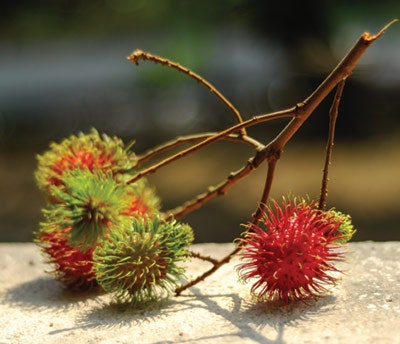
Understanding Diabetes and Glycation
Diabetes is a chronic health condition where the body is unable to produce enough insulin to properly break down sugar (glucose) in the blood. You may think you don’t have any diabetic clients, but some may be unaware of their condition. It is estimated that 1.7 million people are diagnosed with diabetes every year, with an additional 8.1 million as yet undiagnosed.1 Just imagine the number of diabetics coming in for treatments who unknowingly have skin aging issues due to this health challenge.
Glycation occurs in the dermis, and is the process whereby reactions between sugars and proteins lead to intra-molecular cross-links called advanced glycation end products (AGEs). This cross-linking throws off key enzymatic processes and harms their ability to protect against oxidative stress, which in turn allows for inflammation.2 As a result of this process, collagen and elastin proteins stiffen and lose elasticity. The number of AGEs present increases under circumstances involving hyperglycemia and oxidative stress, as in the case of diabetes. Diabetics, whose processing of glucose is at the root of their disease, have an especially difficult time with glycated sensitive skin issues including neuropathy and scleroderma.

Make sure to ask clients on the intake form to list medical conditions such as diabetes. In addition, it is important to recognize any health concerns listed on the intake that may indicate they have diabetes and refer them to a physician. Symptoms of type 2 diabetes can be very subtle, but asking the right questions during both intake and consultation can help identify whether diabetes may be the cause of a client’s concerns.
Diabetic clients can be more tired and hungry than normal. They may also be dehydrated, with a dry mouth, intense thirst and itchy skin. They may have to urinate often, and they may experience blurry vision, yeast infections, numbness in extremities and difficulty healing.
While skin care professionals are not allowed to diagnose medical issues, they can explain to the diabetic client the causes of their skin’s reactivity and premature aging.
Treatment Room Considerations
Before treating a diabetic client, it is important to take the following safety precautions into consideration.
Consider medications. Consider what medications they are taking as well as look at other skin conditions that may be apparent due to diabetes.
Refer to a doctor. If you observe a client with glycated skin, it is always good to suggest that they consult a physician to check their blood sugar levels, as diet will affect the skin from the inside out. Sugar can be ingested in various ways, including by consuming carbohydrates, and can even form during meal preparation. As stated above, if there is too much sugar in the body, protein molecules can cross-link with sugar molecules and form AGEs.3
Check skin. Diabetics experience high infection rates due to their compromised immune systems. Skin infections occur in 20-50% of diabetic patients, more frequently in those with type 2 diabetes, and are often associated with poor glycemic control.4 Skin care professionals need to be aware of any broken skin a diabetic client may have, so as to “do no harm.”

Check insulin type. If the client injects insulin, be sure to consider this as you make their treatment appointment(s). Skin care professionals should not schedule a client in the peak of their insulin activity. If a client uses intermediately acting insulin, treatment is safe about eight hours later. However, if it is a rapid-acting insulin, one to three hours later is the recommended treatment time.5
Wear gloves. Professionals should be prepared to wear gloves for treating diabetic individuals, even if the client does not enjoy them. Consider using nitrile gloves, which do not feel tacky on the skin as latex gloves do.
Check equipment. Consider the equipment used for treatment. Diabetic skin is prone to tearing as well as bruising. This, on top of issues with infection, can reduce the number of treatment options available to them, compared with non-diabetics. Also, research your equipment to see if there are contraindications for diabetic clients. For example, LED light therapy is contraindicated for diabetics because many medications they take cause photosensitivity.6 Just think of all the equipment not recommended for photosensitive clients.
Stay away from too hot/cold. You may also want to eliminate very hot towels or cold, chilled globes as diabetics are also prone to issues of neuropathy, which can cause tingling or numbness in their hands and feet. Due to this condition, they may not be able to tell you if something is too hot or cold, or even whether they are reacting to temperature.
Be gentle. Finally, consider a lighter touch with facial movements or massage, so as not to pull on their fragile skin.
Beneficial Ingredients
When treating the prematurely aged skin of a diabetic client, look for ingredients that fight glycation, hydrate the skin, and repair and protect the barrier function of skin. When the barrier is compromised and elasticity is reduced, glycation will tend to show up more prevalently than in the average client. Following are some ingredients that address these functions.
To fight glycation...

Nephelium lappaceum extracta is a plant based active antioxidant with various anti-aging capabilities. It also offers protection against the formation of AGEs and glycation.8
lbizia julibrissin bark extractb can both protect and repair the proteic structures in skin damaged through glycation by supporting specific detoxifying systems.
Also, carnosine-L-benfotiamine is a chirally-correct, endogenous free radical scavenger and anti-glycation complex. It fights the glycation process and helps to protect and maintain collagen integrity for more youthful and less-inflammed skin.
To hydrate...
Hyaluronic acid, bilberry oil, jojoba oil, aloe vera and honey can all be used to increase hydration. For example, one combination of honey, phospholipids, sphingolipids and hyaluronic acidc would be great for the barrier function protection as well as repair.
Advise Good Habits at Home
Good home care habits can be helpful between treatments. Diabetic clients should avoid showering or bathing in too hot or too cold water, which directly strikes the skin. They should also consider using linens and towels that are good for sensitive skin. There are also special pillows and pillow cases to help prevent tugging on skin that has lost its elasticity. The client should also be encouraged to use SPF daily, as AGEs present in skin make the skin more photosensitive.
Recognition is the First Step
While the general consumer is becoming much more aware of how the glycemic index can affect their skin’s appearance, it is much more important to the skin of a diabetic client. Their levels are much more difficult to control, and medications can cause more detriment to the skin with contraindications such as greater photosensitivity. By acknowledging the fact that a client has diabetes, the skin care professional can work with them to create a skin care program that will help their skin issues. Providing the client with a safe treatment in the spa, good home care habits and good products with anti-glycation, hydrating and barrier repair ingredients will help to make their skin look much healthier.
REFERENCES
1. www.diabetes.org/diabetes-basics/statistics
2. V Srikanth et al, Advanced glycation endproducts and their receptor RAGE in Alzheimer’s disease, Neurobiology of Aging 32 (5) 763–77 (2011)
3. L Walker, The Skin Care Ingredient Handbook, Allured Business Media: Carol Stream, IL (2012)
5. M Currin, Health-Challenged Skin: Desk Reference, Allured Business Media: Carol Stream, IL (2012)
6. www.news-medical.net/health/Light-Therapy-Safety-and-Side-Effects.aspx
a Nepheline (INCI: Nephelium Lappaceum Extract) is an ingredient made by Laboratoire Phenobio.
b Prodizia (INCI: Glycerin (and) Albizia Julibrissin Bark Extract) is an ingredient manufactured by Sederma.
c Glycoderm (INCI: Water (and) Honey (and) Phospholipids (and) Sphingolipids (and) Hyaluronic Acid) is an ingredient manufactured by Chemisches Laboratorium Dr. Kurt Richter.












